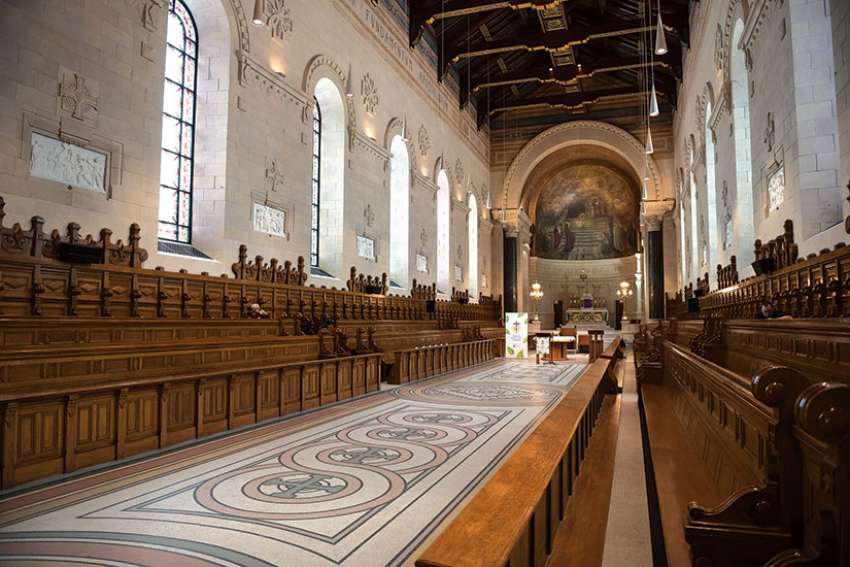Five elements within a sprawling 160-year-old seminary built by the Sulpicians in Montreal have been declared as heritage assets by the Quebec’s cultural affairs department.
“We can now count on financial support from the government to preserve our religious heritage,” rector Fr. Jaroslav Kaufmann, PSS, said following last month’s announcement. “The value of the Grand Séminaire de Montréal as a heritage site has now been reinforced.”
The chapel, the library, the grand staircase, the employees’ chapel and the crypt of the Grand Séminaire de Montréal are all included in the designation. The crypt is still an active cemetery and continues to be used as a burial space for Sulpician priests and valued employees.
The latest designation means the architectural features and decorative elements of the five sections within the complex must be kept intact if and when any of the three wings of the Grand Séminaire are sold or renovated.
“We can’t renovate or make changes that would see any destructive alterations to these parts of the building,” said Kaufmann. “We wouldn’t be able, lets say, to convert the beautiful chapel into a marriage chapel, or install a new modern staircase or anything like that.”
The Seminary’s main chapel, designed by French architect Jean Omer Marchand and opened in 1857, was inspired by an 11th-century basilica in Florence, San Miniato al Monte. The tiny employees’ chapel resembles the Roman catacombs.
“The timing of the announcement is appropriate, coming as it does as the city celebrates its 375th anniversary,” said Kaufmann. “The Priests of Saint-Sulpice (who built the seminary on what had once been their farm) once owned the entire island and were witnesses and architects of the creation of Montréal.”
It costs the Sulpicians an estimated $20-million a year to run the Grand Séminaire, including administration and the housing costs for the 19 men studying for the priesthood. But maintaining the building costs about $1 million a year and the seminary operates with an annual $1 million deficit.
Kaufman says the Sulpicians are looking to rent the west wing of the building to a school or university to help reduce expenses.
At its peak, more than 300 seminarians were enrolled at the Grand Séminaire, but their numbers have been on the decline for the past five decades. “It fluctuates, sometimes we have as many as 30, but this year the numbers are really down,” says Kaufmann.
Two stone towers on the site built in the 17th century were classified as historic monuments in 1974 and the property on Sherbrooke Street was made a heritage site in 1982.
Collège de Montréal, which occupies the east wing of the building, was founded in 1767 as a minor seminary but now operates as an exclusive private boys school.

